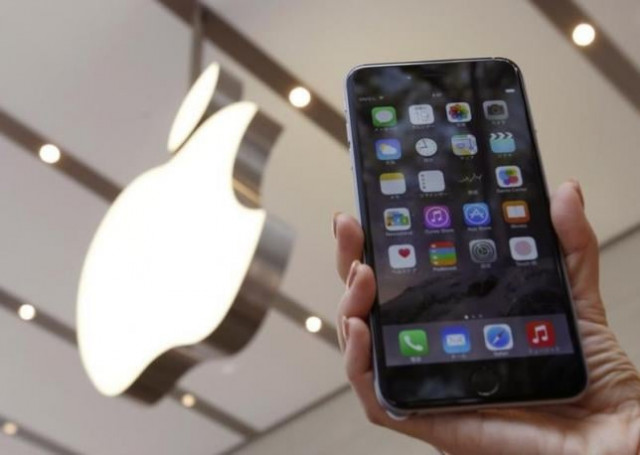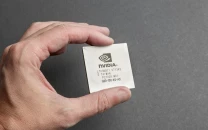Apple completely changing the way you unlock your iPhone
iOS 10 will make you love your unlock screen

A woman holds up the iPhone 6 Plus at the Apple Store at Tokyo's Omotesando shopping district September 19, 2014. PHOTO: REUTERS
For those who can’t wait for its official release in fall this year can use the developers version released by Apple earlier this week. However, the beta version is incomplete and not recommended.
The new features to expect in the new iOS include a completely revamped messaging service, the ability to delete pre-installed apps and a lot more usage of the 3D touch service that was launched in the latest Apple device.
iPhone7 may support dual SIMs, keep headphone jack
However, the most important new feature is going to be the completely redesigned lock-screen, one that every single user interacts with as they pick up their phone.
Since 2007, Apple has changed many things in the iPhone’s interface but the one thing that remained constant was the slide to unlock gesture that everyone is familiar with. Finally, Apple is giving up the trademark feature in favour of a more proactive lock-screen.
After the iOS 10 update, the device will come alive as soon as users pick it up, showing all notifications. Taking further advantage of new 3D touch technology, it will allow users to read a message or open the calendar without having to unlock their phone.
Apple introducing new iMessage features to take on competitors
Swiping left to right swipe, which previously used to simply unlock the device, will now open a page featuring widgets like upcoming events, whether and nearby destinations. Launching the camera with a vertical swipe will be replaced with a right to left gesture, just the way it works in most android devices.
To actually unlock the phone, users will now be forced to click the home button which would then either use the finger print scanner or prompt them to enter their pass code.
Earlier, it was easy for users to ignore their lock-screen as waking the screen by touching the home button unlocked the phone as the Touch ID sensor scanned your finger prints.
In iOS 10, the lock-screen will be visible as soon as the device is picked.
Google's new smartphone could be a game changer
The lock-screen has now become a lot more important than the grid of apps as it shows all the notifications from missed calls to upcoming events and all users need to do is swipe left to right on any notification to jump directly into the app.
Tech gurus have already mentioned how notification screens are increasingly taking over and becoming the most important interface of how we use our phones. However, iOS 10 forces you to see your lock-screen, whether you want to or not.
This article originally appeared on the The Verge.


















COMMENTS
Comments are moderated and generally will be posted if they are on-topic and not abusive.
For more information, please see our Comments FAQ